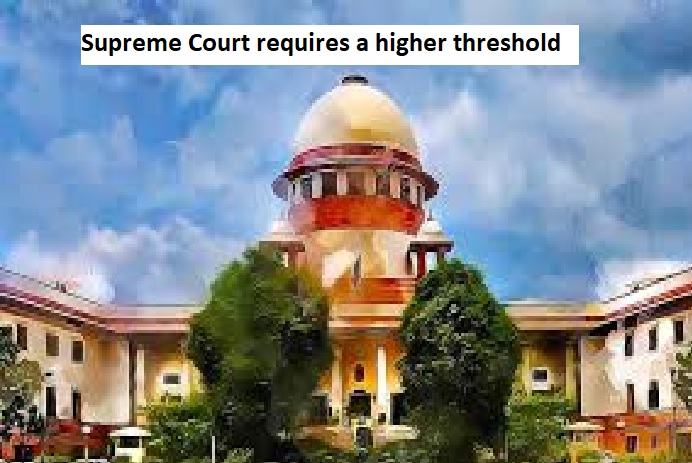


During a medical negligence case, the Supreme Court noted the need for a higher threshold to hold doctors liable. This ensures they prioritize patient care without fear of persecution in challenging medical situations.
Hence, to protect medical practitioners and allow them to fulfill their duties without hindrance, a higher burden of proof is required. The complainant must demonstrate both a breach of duty and a link to the resulting injury to establish a doctor's liability for medical negligence, according to the Justices.
The Bench considered appeals under the Consumer Protection Act, 1986, challenging the National Consumer Disputes Redressal Commission's decision of February 16, 2018. These appeals were related to a case brought by Mrs. Sunita Parvate, who claimed medical negligence during her treatment at Suretech Hospital, leading to permanent damage to her respiratory tract and voice loss.
According to the complaint, the primary allegation of negligence was the unnecessary and forcefully performed Nasotracheal Intubation (NI) procedure, which was the sole cause of her voice loss and permanent respiratory tract deformity. The NI procedure was performed even after several failed attempts to remove the tracheostomy tube (TT). It's important to mention that the NI procedure involves the insertion of an endotracheal tube through the patient's nose to aid in breathing.
The complaint alleges that the primary accusation of negligence was the unwarranted and forcefully performed Nasotracheal Intubation (NI) procedure, which was the sole cause of her voice loss and permanent respiratory tract damage. The NI procedure was conducted despite multiple unsuccessful attempts to remove the tracheostomy tube (TT). It's worth noting that the NI procedure involves the insertion of an endotracheal tube through the patient's nose to facilitate breathing.
According to the complaint, the primary allegation of negligence was the unjustified and forcefully administered Nasotracheal Intubation (NI) procedure, which was the sole cause of her voice loss and lasting respiratory tract damage. The NI procedure was performed despite multiple unsuccessful attempts to remove the tracheostomy tube (TT). It's important to note that the NI procedure involves the insertion of an endotracheal tube through the patient's nose to aid in breathing.
Among other things, the Court noted that the medical team at Suretech Hospital effectively demonstrated that they had given due medical consideration before selecting the Nasotracheal Intubation (NI) procedure. Consequently, it was determined that no negligence occurred in the decision to choose and perform the said procedure.
In its observations, the Court initially examined whether performing the Nasotracheal Intubation (NI) procedure on Mrs. Sunita on May 13, 2004, at Suretech Hospital, while the Bronchoscopy report indicated normalcy in her airways, constituted negligence or not.
Drawing from the influential judgments in Jacob Mathew vs. State of Punjab (2005) 6 SCC 1 and Kusum Sharma vs. Batra Hospital (2010) 3 SCC 480, the Court outlined the three key elements in establishing medical negligence: (1) a duty of care to the complainant, (2) a breach of that duty, and (3) resulting harm or injury attributed to the breach. However, the Bench emphasized that medical practitioners are held liable for negligence only when their conduct falls below the standards of a reasonably competent practitioner.
The Court further explained that due to the unique complexities and complications in individual cases, along with ongoing advancements in the medical field, varying opinions and conflicting views on treatment choices are natural. In such situations, if a doctor chooses a particular treatment course that doesn't yield the desired outcome, they cannot be deemed negligent as long as the chosen course of action adhered to recognized and relevant medical practice, even if it involved a higher-risk procedure. Hence, the treatment pursued should not be considered outdated or obsolete in any circumstance.
Regarding the criticized judgment, the Court noted that while it stated that the Nasotracheal Intubation (NI) procedure amounted to negligence, it did not specify the particular breach of duty. Furthermore, the NCDRC judgment did not identify the individual responsible for conducting the procedure.
Significantly, the Nasotracheal Intubation (NI) procedure was a short-term measure to aid respiration, while the tracheostomy tube (TT) was intended for longer-term assisted respiration. Hence, the NCDRC held the view that replacing the existing TT with NI appeared illogical, especially when Mrs. Sunita could breathe normally using the TT.
TAGS: 'NI' procedure NCDRC judgment Negligence Breach of responsibility Specific breach Procedure performer 'TT' vs. 'NI' procedure.